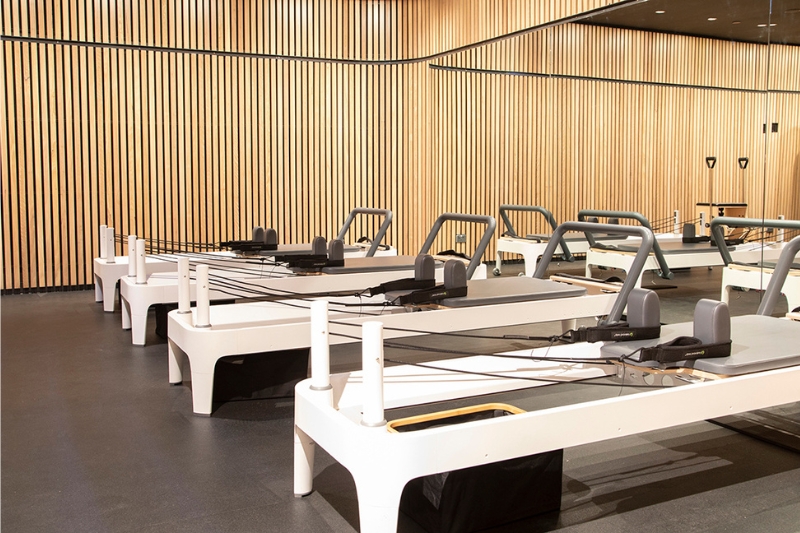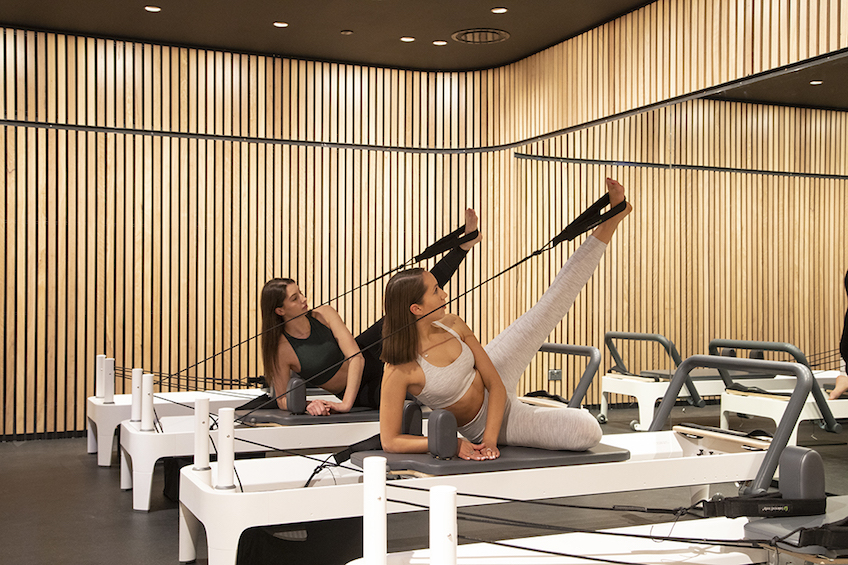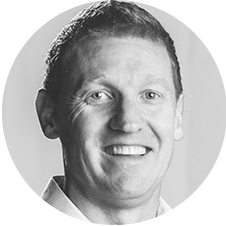While fitness trends come and go, Reformer Pilates is here to stay. A favourite with celebs like Kate Hudson and Miranda Kerr, Reformer Pilates is hailed for its core-strengthening, muscle-lengthening benefits. But it’s about far more than that!
A tool in the arsenal of many professional athletes and dancers, Reformer Pilates is also an incredible practice to rehabilitate the body and tackle niggling, recurring injuries. With the guidance of a skilled instructor (and medical clearance), it can even help you prepare for and recover from childbirth.
Wondering where to sign up? Here’s everything you need to know about Reformer Pilates before getting started.
WHAT IS REFORMER PILATES?
Reformer Pilates is a Pilates method that uses an apparatus known as the Pilates Reformer. While the equipment might look odd at first (and the name might sound a little daunting), don’t be put off! Beloved by Pilates devotees, the Reformer is an incredibly versatile piece of equipment, whether you’re rehabbing an injury or wanting a head-to-toe workout.
WHAT IS A PILATES REFORMER MACHINE?

Invented by the German Pilates Method founder, Joseph Pilates, in the 1920s, the Reformer machine was – true to its name – built to ‘reform’ the body. This piece of specialist equipment consists of a bed-like frame with a sliding platform or carriage and a system of springs, pulleys and ropes. The carriage moves on wheels back and forth within the frame, with the adjustable springs at the foot of the bed creating varying levels of resistance.
WHAT ARE THE BENEFITS OF REFORMER PILATES?
Where do we start? Safe and low impact, Reformer exercises are beloved for their ability to improve core stability and muscle tone – without adding bulk.
Regular use of a Reformer machine improves posture, flexibility, motor control, range of motion, muscular imbalances, balance, endurance and concentric and eccentric muscle control. While helping prevent injury and assisting with pain management.
It improves spinal mobility and trunk stability and strengthens the core and pelvic floor. The core activation and control required also help to improve body awareness, as Pilates breathing helps to down-regulate the central nervous system and help alleviate stress.
HOW IS REFORMER PILATES DIFFERENT FROM MAT PILATES?
Reformer Pilates is performed on the Reformer machine while a Mat Pilates class takes place on – you guessed it – a mat. In Mat Pilates, you use your weight for resistance, whereas on the Reformer bed, this is achieved via the pulleys and weighted spring system. By changing the springs, the level of tension can easily be altered for different exercises and modifications made for different bodies.
While both workouts are great, the Reformer offers added versatility for targeting muscle groups. From legs-in-straps to jackrabbits and mermaids, the machine facilitates a greater number of exercise combinations and body positions. In a typical class, you can expect to complete a series of exercises seated, on your back, on each side, kneeling, on your stomach (e.g. on a Pilates box atop the Reformer), on your toes and flat-footed.
However, the machine can also be used within a rehabilitation setting in Clinical Pilates sessions, with exercises tailored to your injury or movement inefficiencies.
ARE REFORMER CLASSES RIGHT FOR YOU?

If you want a complete workout that will strengthen and tone from top to toe and improve your posture, fitness and flexibility, Reformer Pilates is for you.
Taught in the correct environment by a qualified Pilates teacher, Reformer Pilates can benefit all bodies. Low impact and ideal for both injury rehabilitation and prehab, it helps individuals of all ages and physical fitness levels enjoy a fun, challenging and rewarding movement practice.
Depending on the exercise, the moving carriage and springs can provide both assistance and resistance. Because of this versatility, Pilates Reformer machines can equally facilitate a novice or advanced practitioner.
ARE THEY SUITABLE FOR BEGINNERS?
Absolutely! This style of Pilates is suitable for inexperienced and advanced students alike. Your studio may offer a dedicated beginners course to introduce you to the apparatus, exercises and Pilates principles like neutral spine, core activation and breathwork.
But if not, your teacher can tailor exercises to meet different fitness goals and skill levels and provide specific exercises to assist with injury rehabilitation.
WHAT PARTS OF THE BODY DOES THE PILATES REFORMER WORK?
Reformer exercises educate the whole body to work integratively. They’re great at both strengthening the larger muscle groups (e.g. triceps) and challenging smaller, often under-utilised stabilising muscles (e.g. deep core muscles).
WHAT LEVEL OF RESISTANCE IS BEST?
By adjusting the springs, you can make it more or less difficult to move the carriage. So, lower resistance is easier, right? Well, yes and no. Less spring tension will make the carriage move more freely, but your stabilising muscles will get a stronger workout.
HOW OFTEN DO YOU NEED TO WORK OUT TO SEE RESULTS?
When getting started, it’s a good idea to start with 1-2 sessions a week as your body adjusts – and you learn to activate muscles you never even knew you had! Once you’re more familiar, 2-3 sessions are generally recommended to achieve optimal results.
WHAT ARE SOME POPULAR REFORMER PILATES EXERCISES?

There is a wide range of moves and stretches that can be customised to accommodate various fitness levels and goals. Here are a few of the most common:
- Footwork: Footwork involves sliding the carriage back and forth using the feet while maintaining proper alignment. It helps warm up the body and engages the lower body muscles.
- Leg Circles: Leg circles target the hip flexors and challenge core stability. Participants perform controlled circles with one or both legs while lying on the carriage.
- Hundreds: This classic Pilates move involves rhythmic breathing and pulsing movements of the arms while holding the legs at different angles, engaging the core and improving circulation.
- Rowing Series: Using straps and handles, participants simulate rowing motions. This exercise targets the upper body, including the back, shoulders, and arms.
- Bridge: Similar to the yoga pose, participants lift their hips off the carriage while engaging the glutes and hamstrings. This exercise strengthens the posterior chain and improves hip mobility.
- Teaser: A challenging exercise that involves lying on the back, extending the legs, and lifting the upper body into a V-shape. Teaser engages the core, hip flexors, and lower back muscles.
- Mermaid: The mermaid involves sitting sideways in the z-sit position with one hip against the shoulder rest, lengthening one arm overhead and laterally flexing the spine. This graceful move enhances spinal flexibility and strengthens the oblique muscles.
TIPS FOR GETTING STARTED
If you’re interested in trying Reformer Pilates, start by finding a qualified teacher. This type of workout involves specific techniques and adjustments that are best learned under the guidance of a certified instructor. So look for a reputable Pilates studio, gym or fitness centre with Reformer classes on the schedule.
Studios and physiotherapy clinics are often best as the classes are generally smaller (ours have a maximum of four students), with more personalised attention. And in some studios, classes may even be taught by physios.
Keep an eye out for beginner or introductory classes as well. These classes typically focus on fundamental exercises and proper alignment and are great for getting you used to the apparatus. Make sure you mention any injuries, medical conditions, or physical limitations so your teacher can support you and provide modifications to ensure a safe and effective workout.
CAN YOU PRACTISE WITH AN INJURY OR DURING PREGNANCY?
Provided you’re training with a certified Pilates instructor, Reformer Pilates can support your recovery. The key is to always inform your teacher, follow their instructions and make modifications as needed. It’s also important to stop if you are in pain or something does not feel right – you’re the best judge of your own body’s limits.
Pilates sessions are considered safe during certain phases of pregnancy and as part of your post-natal care. However, you must seek clearance from your doctor and inform your teacher so adjustments can be made during the class.
A FINAL WORD
Performed on a moving Reformer bed, Reformer Pilates is a safe, challenging and versatile workout that can be adapted to suit most individuals’ goals and physical condition. With a distinctive combination of controlled movements, concentration and mindful breathing, it’s your go-to for improved posture, balance and core strength. And it can even help you prevent future injuries and promote a sense of calm.
Although the first steps might seem challenging, the benefits – from greater muscle endurance to decreased stress – are significant. And with the support of a qualified teacher and a commitment to regular sessions, you’ll be well on your way to reaping the rewards.
Follow the link to book a Melbourne CBD Pilates class.






